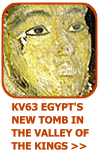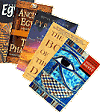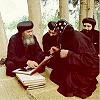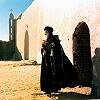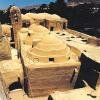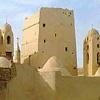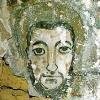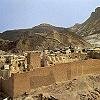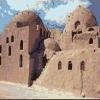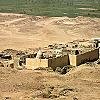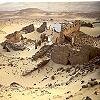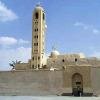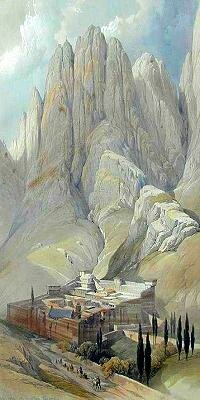|
|
||||||||||||||||||||||||||||||||||||||
|
|
Monasteries and convents - the heart of religious life
Located throughout Egypt, ancient convents and monasteries, the oldest in the world, are living and breathing reminders of a time that was witnessing the emergence and development of a new and unique religion. Built in isolated and sometimes inaccessible locations, these ancient monasteries today provide us with an almost direct link back to the early Christian worshippers who helped to build them all those centuries ago. Near the Red Sea coast of Egypt, in a cave 270 metres beneath the monastery named for him, lies the tomb of St Anthony. His followers established what many believe to be the world's first monastery in the year 356 AD, just after his death. St Anthony's Monastery (Deir Mar Antonios), and the neighbouring monastery of St Paul's, are both Coptic Christian and are the oldest inhabited monasteries in Egypt. Hidden deep in the Red Sea Mountains and relying on springs for their water supply, both still observe rituals that have hardly changed in over sixteen centuries. Rather like a self-contained village, the monastery has gardens, a mill, a bakery, a library and five churches.
Christian monasticism was founded by St Anthony in Egypt's Eastern desert. A disciple of St. Anthony's known as St. Macarius, first established ascetic life in Wadi el-Natrun, assisted by another follower, St. Ammon.
Probably one of Egypt's most famous monasteries is the Greek Orthodox Monastery of St Catherine located at the foot of Jebel Musa/Mount Horeb (thought to be the biblical Mount Sinai) in a spectacular natural setting. Often featuring in David Robert's sketches of Egypt and the Holy Land (see right), St Catherine's was built between 527-565 AD by Emperor Justinian to house the bones of St Catherine of Alexandria. It is built around what is thought to be Moses' Burning Bush. The monastery houses the worlds second largest collection of illuminated manuscripts (the Vatican has the largest) numbering well over three thousand volumes in Greek, Coptic, Arabic, Armenian, Hebrew, Slavic, Syriac, Georgian and other languages. The fourth century "Codex Sinaiticus" (now in the British Library), was discovered at St Catherine's in around 1850. The exact number of old monasteries and convents scattered throughout Egypt is unknown, although to date there are thought to be somewhere between fifty and sixty specific monasteries - habited, uninhabited, disused or ruined. Recommended reading If you are interested in finding out more about the Egyptian Copts and the Egyptian Christian sites, then you may find the following books of interest. Click on the books for further information and to order online.
See Egypt as it was through the sketches of David Roberts and the photos of Francis Frith >>
|
|||||||||||||||||||||||||||||||||||||

|
||||||||||||||||||||||||||||||||||||||
|
||||||||||||||||||||||||||||||||||||||





